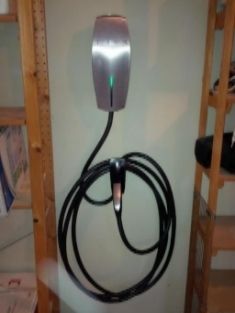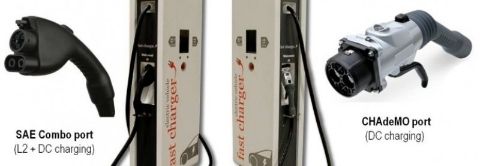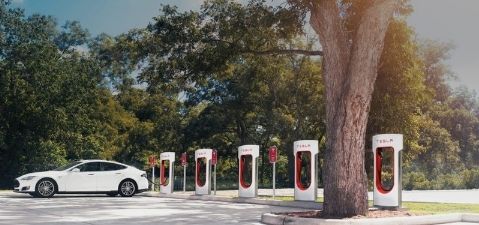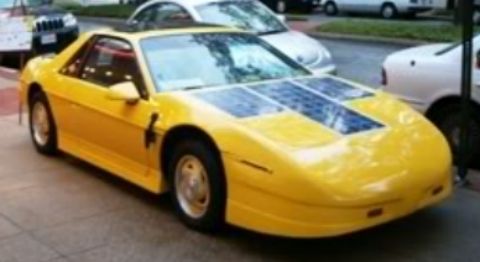200+ mile range EVs will change the paradigm
 |
| The Tesla Model 3 (2017) and the Chevy Bolt later this year will change the world with their affordable 200-mile range |
For those of you who haven't been tuning into what has been going on in the automotive industry with respect to electric vehicles (EVs) lately, from 2008 when Tesla introduced the first viable electric vehicle to the market there have been more than 1.5 million electric vehicles sold world wide, and over 500 thousand EVs sold in the US alone. Most electric vehicles sold by the major automakers to this point have had the distances that they can travel on a single charge, also known as range, limited to between 65 to around 100 miles writes Joe Lado of Daily Kos.
Tesla Motors, on the other hand, has had its vehicle's ranges typically set at 200 miles or above. They flirted with a 160 mile range vehicle for a while, but sold few and dropped the production of such vehicles as of March of 2013. Tesla's vehicles so far have been marketed to upscale luxury/performance market, which inadvertently is like saying its vehicles were expensive. Tesla introduced itself to the automobile market with it's Roadster, which sold for $109,000, and gave consumers a two seat sports car with 221 miles range.
Tesla then introduced an electric full-sized luxury sports sedan called the Model S with a 265 mile range and a price tag of around $86,070. They then introduced an SUV into the market known as the Model X that started with a sale price of $80,000 and a range of around 250 miles per charge. Despite the higher price tag of Tesla vehicles Tesla has managed to sell a very large number of vehicles and its sales are increasing month over month allowing it to capture a lion's share of the sports/luxury car market segment. When we look at the EV market from its current renaissance that began in 2008 to now we see Tesla with vehicles having ranges of 200 miles and above and the major automakers producing and selling quite a few electric vehicles with ranges of 100 miles range or less.
Now, I have owned experimental converted production electric vehicles, home built EVs, and production EVs, and I have found that they have been useful even with ranges as low as 50 miles. However, having more range does open up the possibilities of more opportunities to do more things with an EV than is possible with lower range vehicles. A greater range is a more desirable aspect when comparing EVs as well. I now live out in the country about 40 miles from the center of the nearest big city. Big cities have a natural draw with the possibilities of seeing cultural events, conventions, shows, etc.
Even though I can easily find charging stations from where to charge, the range limitations of my current EV, a Nissan, Leaf (EPA 75 miles) does lead me to make decisions limiting my activity. I don't plan long trips with my EV. If I travel someplace where driving around is part of the attraction I might limit my driving while there because of the need to conserve my range to get back home. I do have the option to use my hardly ever used gasoline vehicle, but I really don't like using my gasoline vehicle.
As soon as I get into the other vehicle, from the roar of starting it up, to trying to hear the radio over the engine noise, to the smell of gasoline and oil when filling it up, to the sluggish performance when I hit the accelerator pedal, the experience is unpleasant for me to say the least. I love driving my electric car, but on occasion I do wish it had greater range. I wouldn't need a lot of range. Just enough to drive to the city and drive around and still be able to get back home without needing to charge again. Just enough to drive around 3 hours, around 150 miles, before needing a quick charge. I don't like driving more than three hours without a break anyway. Three hours is just about all my bladder can take. I figure if my EV had about 200 miles of range before needing a charge that would be really comfortable for me. Of course it would have to be affordable. From the latest news coming from the EV world it looks like I will be in luck.
In 2007 Tesla's visionary CEO, Elon Musk put in its business plan that it would make an affordable electric vehicle. Typical for Tesla, this vehicle, which was later named the Model 3, would have a range of more than 200 miles. Two hundred miles! This summer Tesla began taking orders for this vehicle and took around 400,000 $1,000 deposits for it. As excited about this vehicle as I am, this isn't the point of this article.

The point of this article is that with Tesla's announcement of a 200-mile range, affordable EV, the reality of the EV world has changed. In particular the 200-mile range EV has changed the infrastructure question for EVs. You see, ever since Elon Musk tweeted out to the world the idea of the Model 3 on July 16, 2014, major automakers have been making plans for their own versions of a 200-mile range electric vehicle. First to market will be GM with its Chevy Bolt EV (not to be confused with the Chevy Volt plug-in hybrid). The Bolt will be available for purchase late in 2016 with a price tag of $37,495 and an EPA rated range of 238 miles.
Tesla will be out with its Model 3, priced at $35,000 with a 215 mile range beginning in 2017. According to Kazuo Yajima, Nissan's global director of EV and HEV engineering, Nissan plans a completely redesigned Leaf with at least 210 mile range for 2018. Hyundai has announced that it will be coming out with a 200-mile EV also coming in 2018.
Ford first announced that it would not be following other automobile manufacturers into the 200-mile range EV market was quickly followed by Ford's president and CEO Mark Fields announcing that the automaker wants to be the leader in affordable 200-mile EVs starting with an entry that he claims is well on its way to production to come out some time in 2019.
As you can see, ever since the announcement of Elon Musk for Tesla to produce an affordable 200-mile range EV, several major automakers have solidified their commitments to producing 200-mile range EVs, but that isn't the end of the story. Nearly all other major automobile manufacturers, VW, BMW, Mercedes-Benz and others have since then put forward that they too are going to be producing 200-mile range EVs, sounding a death knell of sorts for the low range EV. This future onslaught of 200-mile range EVs entering the market in the next few years dramatically changes downward the infrastructure needs for EVs.

The problem is that the current model for EV charging infrastructure is based on low range vehicles of less than 100 miles range. The charging behavior of EV drivers under that model is based on long time periods of charging typically at home, work and other places. Both home and work charging allow for long stretches of charging, which allows for charging at 240 volts, also called level 2 charging. This level 2 charging or the SAE j1772 standard is a standard all electric vehicles being manufactured today are compatible with.
Outside of home and work the charging model strategy is to develop convenience charging opportunities at places like businesses, shopping centers and public parking. Typically this type of charging uses level 2 charging, which depending on the amperage can take a vehicle like mine with 75 mile range between 4 to 8 hours to charge. In this model battery capacity is small and most charging is done at home where there is plenty of time to charge over night. If you work at a place that is over half of your total range this model would want you to add a charging station at your work place so that you can get home. If you are planning to go to an event that is over half of your available range you may want to find a place to charge near the event so you can charge while you are attending.
Are you getting the picture? Low range EVs require a greater infrastructure to deal with their low ranges. It also increases the hassle of owning an EV since you have to look for charging stations to help you complete trips and hope that they are close to where ever you are going and not occupied by other vehicles charging when you get there. Sometimes when you do find an acceptable charging space the charging spot is occupied by an internal combustion engine (ICE) vehicle. This is called among EV owners being ICEd.

There is a way out of this hassle. Most EVs are equipped with quick charger options. For the mainstream automakers these are also known as level 3 charging. Level 3 charging is done at 480 volts and can charge a vehicle like my Nissan, Leaf up to 80% typically in a half hour. Unfortunately there are three standards for quick charging. The Nissan championed Japanese model is called CHAdeMO. There is the challenger to CHAdeMO called the SAE Combo developed by the Society of Automotive Engineers (SAE) championed by GM and is considered the US and European standard.
The third option is the Tesla Supercharger. Tesla, since it's vehicles have much larger battery capacity, need a system that is much more powerful then the standard ones being championed by the major automakers to achieve that half an hour charge time. The idea behind quick charging is that long distances can be traversed with shorter, half hour or so stops, or trips to areas without chargers could be still accessed as long as a quick charger is available near by or along the way.

Tesla's long range vehicles simply don't need an extensive infrastructure of convenience chargers since even at 200-mile range Teslas have plenty of range to do commutes, event trips or shopping and return home. Where charging was needed for Tesla's long ranging EVs was on long trips between cities. The concept is to travel a few hours stop at a Tesla Supercharger area, plug-in, go to the nearby place to get food, use the restrooms or just relax for about a half hour and then unplug and drive for a few hours again before repeating the process.
Tesla built out its own charging infrastructure to advance this concept. They focused their proprietary infrastructure on connecting cities. Tesla continues to add to its charging infrastructure and makes it available to most of it's Model S and X owners for free. It is now possible to travel from coast to coast in the US via the network of Tesla Superchargers, as well as travel between most major cities.
The quick charger long distance model for the major automakers doesn't really exist. Nissan has moved to mimic Tesla's model by insisted that its Nissan dealers install CHAdeMO level 3 chargers and make them available to Leaf owners for free. However, Nissan dealers are a hit and miss proposition for travelers, typically located only in or near cities. They also are known to close their charging stations down when the dealership is closed, or require subscription to the chargers charging plan or other confusing hassles. Also, not all of the Nissan dealers have installed CHAdeMO quick chargers despite the urging from Nissan corporate.
The other quick chargers that have become available have been installed by personal, institutional or business investment and not by coordinated planning. Where I live some churches have installed CHAdeMO quick charging stations, while, some retailers have installed some SAE chargers. A grocery store here, a local government office there, a business here and there, all installed willy nilly, and willy nilly is not a plan designed to make the quick charging infrastructure useful. From my perspective there needs to be a change in how charging infrastructure is being done. Especially since the EV world will change due to the coming 200-mile range paradigm.
This new move to 200-mile range EVs gives us an opportunity to rethink what we are doing. First, it means that all the money being used to develop level 2 convenience charging infrastructure will be, in the very near future, unnecessary. With 200-mile range EVs, slow level 2 charging simply doesn't do enough to help at shopping centers, restaurants and convenience stores to be useful. They will still be useful at hotels since plenty of time can be devoted to charging overnight, given that the wattage of the charger is brought up to the maximum of the SAE j1772 standard (19.2 kW) and the vehicles are redesigned to accept this much higher wattage through their j1772 standard charge port.
However, level 2 charging at work would only be useful if the employee has a longer than 2 hour or 100 mile commute each way, which would be highly unusual. I believe that the Tesla model for EV charging infrastructure is a glimpse at what the EV charging infrastructure from now on should be. Let the infrastructure for level 2 charging build out organically, based on requests and particular need. However, the focus of nearly all of the money available for developing charging infrastructure from governments, businesses and other sources should be used on developing a network of quick charging stations connecting cities and at strategic locations in city centers.
You would be surprised how relatively few quick charging station locations are needed to service the entire country. I calculated out that around 60 quick charging locations would meet just about all of the charging needs for my home state of Wisconsin, and that is with charging stations spaced only 50 miles apart. The entire United States would be fully serviced with somewhere around 2900 charging station areas. For example the state of Hawaii would only need around 12 level 3 type quick charger stations to meet all its needs on all its islands. Surprising isn't it? Especially when you think there are 168,000 retail gasoline stations nationwide in comparison. Why? How? You say.
The reason why EVs need much less infrastructure then internal combustion engine (ICE) vehicles do is that the infrastructure that powers electric vehicles is already at our homes, and electric vehicles get their fuel to move mainly at home. Let me give you an image that might help you understand how EVs are different. Just imagine that you had a gasoline pump at home where the gasoline was piped to it directly from the refinery.
Also, imagine that you got in the habit of filling up your car before going to bed every day. You would have a full tank of gas every time you left your home in the morning. The only time that you would need a gasoline station would be on long trips that were beyond the range of the gasoline in your tank. Now imagine everyone having the same pump as you do. The need for gasoline stations would drop dramatically. Well, with electric vehicles that pump at your home exists with the electricity that comes to your house anyway to power your lights and appliances.

You might ask how does charging at home work? With this I can give you the benefit of my experience owning and driving experimental electric vehicles. When I drove around in my Destiny2000, which was a Fiero converted to run on electricity that had a custom front hood and back deck with solar panels on them. The Destiny 2000 was an attempt to make a mass market EV by a group of engineers way back in the mid 1990s. The powertrain system was simple, just 18, 6 volt deep cycle lead acid golf cart batteries, an off the shelf motor controller and a large and rugged DC electric motor. Where the engineers really advanced things was in the onboard charge controller that could use from a regular household 110 volt outlet electricity to the electricity from a 240 volt appliance outlet.
What this meant was that where ever there was access to electricity I could charge the vehicle. I even carried with me a standard lightbulb socket adaptor that I could use to charge up from. My Destiny2000 gave me 50 miles range consistently and even though the battery pack was 26 kWh big; bigger than my Nissan, Leaf's 24 kWh battery is now, it would charge fully overnight on a regular 110v outlet.
How is this possible? Batteries are funny creatures. When they are empty they charge fast until they pass 80% then they develop resistance and slow down. At around 90% they charge much, much slower. So even though you can get to 80% of charge in a relatively short period of time it will take much longer to get from 80% to 90% and from 90% to 100% it would take a great majority of the time charging.
I lived in a close in suburb of a major city. My fully charged Desitny2000's 50 mile range could get me from where I lived on one side of the city to the suburbs on the opposite side of the city and back on one charge. Most of the time I would only drive to work, take my kid to soccer practice, or do some grocery shopping and still only use around half my charge. Since I didn't typically drive all the way to empty on my Destiny2000, the charge time needed, even at 110 volts, was shortened dramatically. It allowed for the majority of the time charging to be spent on that part of the charge cycle where the battery's resistance didn't allow for lots of electricity. The extra electricity would only be turned into heat that might damage the batteries or it would electrolyze the water in my lead acid batteries into hydrogen and oxygen.
My charge controller was sophisticated enough to determine how many amps it could push through the batteries safely. All this stuff came together to make using a regular 110v outlet just fine for charging overnight. Even though I had a 240 volt outlet available to me to charge the Destiny2000 faster, I never used it, being perfectly content with a regular outlet that charged my battery to near 100% by morning. AAA in a resent survey found that all drivers on average drive about 32 miles a day. If you were to double that amount to 64 miles encompassing nearly all drivers you could easily recharge those miles overnight with a level 2 type charger. Which is to say that for the most part you will be able to leave your home every morning with the full complement of the 200-mile range of the battery pack.
You may have noticed that the battery on my converted Pontiac Fiero/Destiny2000 was 27 kWh and that it was bigger than my Nissan, Leaf's battery of 24 kWh, yet my Destiny2000 could only go 50 miles on a charge while the Nissan, Leaf, a bigger vehicle, could go 75 miles on a charge with a smaller battery. This is because lead acid batteries are extremely heavy, 1080 pounds heavy for my Destiny2000. A large amount of the stored energy in the batteries is used to just push these very heavy EV batteries around. The Nissan, Leaf uses a lithium ion manganese oxide battery that weighs 660 pounds, much less than the battery in the Destiny2000. That weight difference and better control over power electronics in the Leaf make all the difference.
As EVs advance greater ranges will be possible with smaller lighter batteries. Hopefully, big jumps in technology will make even longer ranges possible. Just as an example of how advances in technology can affect existing EVs, Tesla has offered owners of the original Tesla Roadsters a battery upgrade that transforms the Roadster's original range of 221 miles to a 330 mile range in the same battery space.

The paradigm shift to 200-mile range electric vehicles is upon us with production by nearly all the major automakers set to begin now. This new paradigm has changed our charging infrastructure needs going forward. Gone is the need to have a bunch of level 2 charging stations all over the place, 200-mile range EVs don't really need them. Also, having quick chargers placed willy nilly about based on random funding and support should give way to having level 3 quick charging stations positioned mainly on the highways spaced at 50 mile intervals connecting major cities and much fewer but more strategically placed quick chargers located inside cities.
Government, businesses and other organizations investing in building out the EV charging infrastructure should concentrate their efforts on the 2,900 or so quick charging locations needed across the country to make EVs fully competitive with liquid fueled vehicles. The pieces for creating a world of truly cleaner and quieter transportation is nearly in place thanks in large part to the vision of Elon Musk and the willingness of the rest of the industry to follow suit. All we need now is for us to take the desperate pieces that make up that future and put them together in a cohesive plan of action we can all participate in. Joe Lado/Daily Kos
